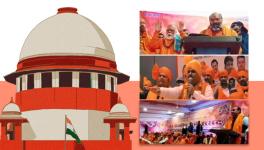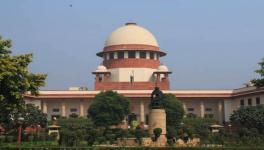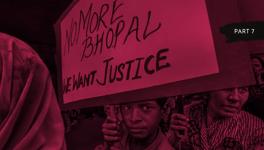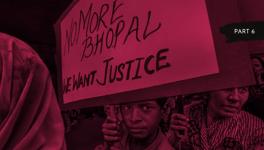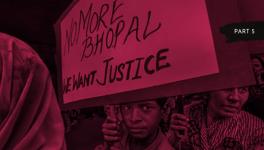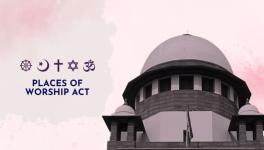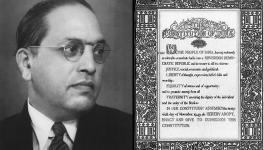Dreaded Section 66A of IT Act: Supreme Court Issues Notice to Centre
File Photo : Teachers Unhappy With SC’s Decision on Reservation in Appointments
On March 24, 2015, the Supreme Court in its famous judgement in the Shreya Singhal case, struck down the infamous and much-dreaded Section 66A of the Information Technology Act.
The apex court’s ruling, authored by Justices Rohinton Nariman and Jasti Chelameswar, was hailed as a major victory by advocates of free speech. It came as a much-needed relief to a wide swathe of citizens who were hounded by the state and its agents for writing online posts or drawing cartoons which offended the sensibilities of intolerant politicians and others in power.
That provision, inserted through an amendment act in 2008, criminalised sending “offensive messages” to anyone online. The ambiguity surrounding what constituted such messages became the main plank on which the Court rested its decision. It held that the definition - one that lumped together the grossly offensive, menacing, annoying, inconvenient, dangerous, insulting, intimidatory - was null and void for its vagueness. The Court explained that the consequence of such vagueness was a subjectivity which undermined the rule of law.
However, this zombie piece of legislation, on the basis of which there were around 2,000 arrests in 2014 alone, has not been taken off from the statute books and was still being used in multiple cases to arrest and harass citizens, the Supreme Court was told recently. This move came on a PIL filed by civil society organisation People’s Union for Civil Liberties which was heard by a division bench of the court on January 7 this year, and on which the judges issued notice to the centre.
During the hearing, the bench was shell shocked at the submission made by Sanjay Parikh, PUCL’s advocate, and minced no words to make it clear to the government that it was taking the matter with utmost seriousness and that the latter had quite a lot of explaining to do. In fact, the judges issued a stern warning to the government- that in case it drags its feet on the matter and refuses to act with alacrity, the court will be compelled to step in and issue necessary directions. Justice Rohinton Nariman, who headed the bench, said the officials concerned will be sent to jail if it is found that the scrapped section is still being used, newswire PTI reported.
PUCL’s Contentions
In its petition, PUCL contended that despite its constitutional death, Section 66A continues its terrible afterlife. Police is still registering FIRs and Courts are still hearing 66A cases. This is terrible for the freedom of speech online, and it undermines the rule of law and the judgement and authority of the Supreme Court of India.
This can be gleaned from the information available in media reports, data from the National Crime Records Bureau, and cases indexed in two different online databases. While these data sets do not provide exhaustive coverage of the entire legal system, they sufficiently establish that Section 66A of the IT Act continues to live on in the legal system despite the judgment in Shreya Singhal case.
The existence of several quashing petitions filed before High Courts proves that it is apparent that trial courts and prosecutors are not actively implementing the decision of the Supreme Court and the burden of terminating illegal prosecutions based on Section 66A of the IT Act, is unfairly falling upon accused persons. Thus, compliance with the Constitution has been made primarily dependent on the means of individual accused persons, potentially rendering justice beyond the reach of the accused persons without means to afford quality legal counsel.
Take the case of Rahat Khan, a 22-year-old man arrested in March, 2017 in Dankaur by Greater Noida police on a complaint that he had posted a morphed picture of Adityanath, the CM of Uttar Pradesh for an offence alleged under Section 66-A. After this case being prominently being reported, reports suggest that the police converted charges to Section 66 of the Information Technology Act, 2000 and Section 153A of the IPC.
Another case was that of Zakir Ali Tyagi, an 18-year-old from Muzaffarnagar in UP who posted a comment on Facebook questioning the Uttarakhand High Court orders on the River Ganges being a living entity, asking that since “The Ganga has been declared a living entity; will criminal charges be initiated if someone drowns in it?” In October 2017, the Telegraph reported that Tyagi spent 42 days in jail due to police registering a case under Section 66A of the IT Act, and Section 420 of the Indian Penal Code. The allegations under Section 66A were converted to Section 66. But once he was released on bail, the police added the offence of sedition.
In both these cases, there was considerable mainstream media coverage by national newspapers. Hence, the likelihood of the police discovering the error of continued use of Section 66A would have become apparent. But dropping an alphabet does not impart greater legality since Sections 66 and Section 66A are vastly different with the former dealing with hacking and monetary losses, and the latter being a speech offence that can be contracted and expanded at will.
PUCL submitted that although media reports could be somehow relied on, “with their limited resources they lack the means to identify each specific instance of application of Section 66A IT Act. Nor does the Petitioner claim to have conclusively identified reasons behind such non-compliance with the decision of this Hon’ble Court in Shreya Singhal. However, it is submitted that one reason for the present state of affairs is lack of adequate communication of the decision in Shreya Singhal across all branches of State”.
The petitioning civil society organization referred to the fact that during the pendency of the writ petitions ultimately decided in Shreya Singhal case, the apex court also passed order dated 16.05.2013 directing all states and union territories to ensure compliance with Advisory No. 11(6) / 2012 - CFE dated 09.01.2013 issued by the government at the centre, which installed procedural checks to limit abuse of Section 66A of the IT Act.
Also read: Is ITU Really Threatening the Internet?
However, the Centre, that is, Respondent No. 1 in the present petition, has not issued any advisory subsequent to the Supreme Court’s decision.
According to information available in the public domain, following the Shreya Singhal Judgement the Centre (i) continued online publication of Advisory dated 09.01.2013, issued prior to Shreya Singhal and without legal basis today, (ii) online publication of the judgment in Shreya Singhal, and (iii) a statement by the then-Minister of Information technology welcoming the decision in Shreya Singhal judgement.
As per the latest information , the “Government has updated the electronic copies of both the IT Act and the IPC on November 6, 2018 (these can be confirmed by the metadata in the PDFs) that are published on Indiacode. Now the changes are as follows:
-
Page 24 of the IT Act on Indiacode now has Section 66A with a footnote (fn 1), stating “Section 66A has been struck down by the Supreme Court’s Order dated 24th March, 2015 in the Shreya Singhal vs. Union of India, AIR 2015 SC. 1523”.
-
Page 71 of the IPC on Indiacode now has Section 303 with a footnote (fn 2), stating “Section 303 has been struck down by Supreme Court’s order dated 7 th April, 1983 in the Mithu, Etc., Etc. vs. State of Punjab Etc., Etc. 1983 AIR 473, SCR (2) 690”.
However, these fall far short of an explicit amendment in the law which could be notified to all law enforcement agencies.
Yawning Signalling Gap
This absence of any appropriate executive notifications or circulars, and has resulted in a signalling gap whereby other actors in the State machinery have presumably not received any official communication about the judgment and final order dated 24 March and its effects. PUCL contended that the same may be remedied by issuance of appropriate directions by the apex court.
Submitting data of about 22 people having been arrested under the scrapped law ever since it was struck down in 2015, and referring to a paper published by the Internet Freedom Foundation on the malicious and wrongful use of the now “zombie legislation”, the petition which urged the top court to step in when the government has miserably failed to do, is to come up for hearing next month. The government’s compliance report as well as real action on the ground, are keenly awaited.
Read more: Almost 4 Years After Being Struck Down by SC, Section 66A Continues to Be Used All Over India
Saurav is an independent journalist based out of Delhi, and specialises in reporting on legal,
human rights and gender issues. He earlier used to teach media law and jurisprudence in
Bombay and Pune. He tweets @SauravDatta29.
Get the latest reports & analysis with people's perspective on Protests, movements & deep analytical videos, discussions of the current affairs in your Telegram app. Subscribe to NewsClick's Telegram channel & get Real-Time updates on stories, as they get published on our website.











